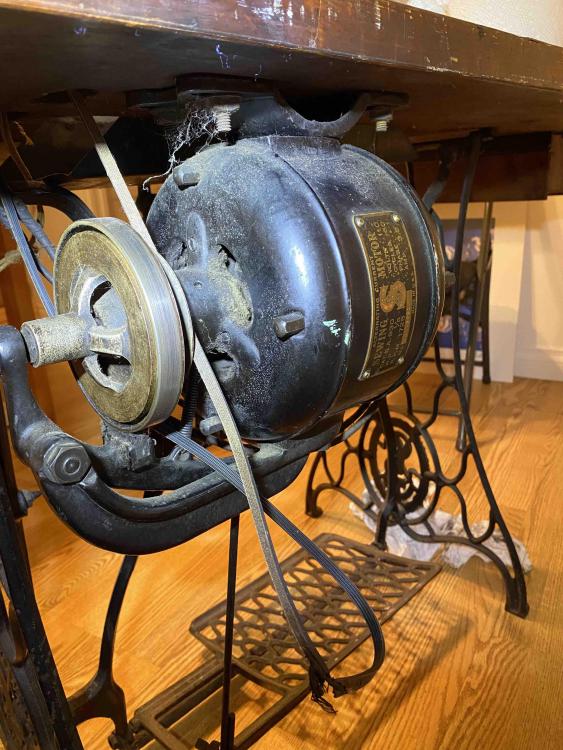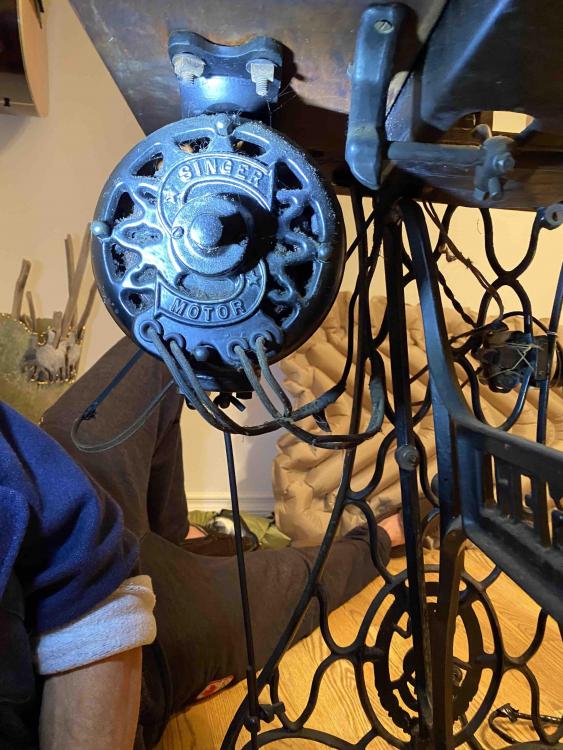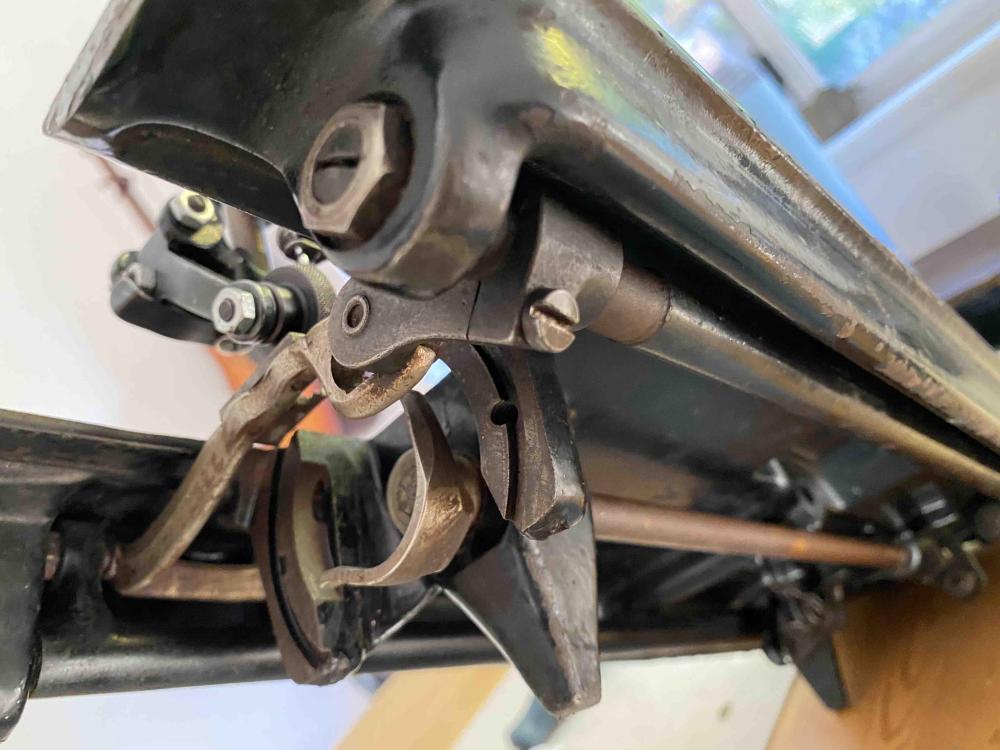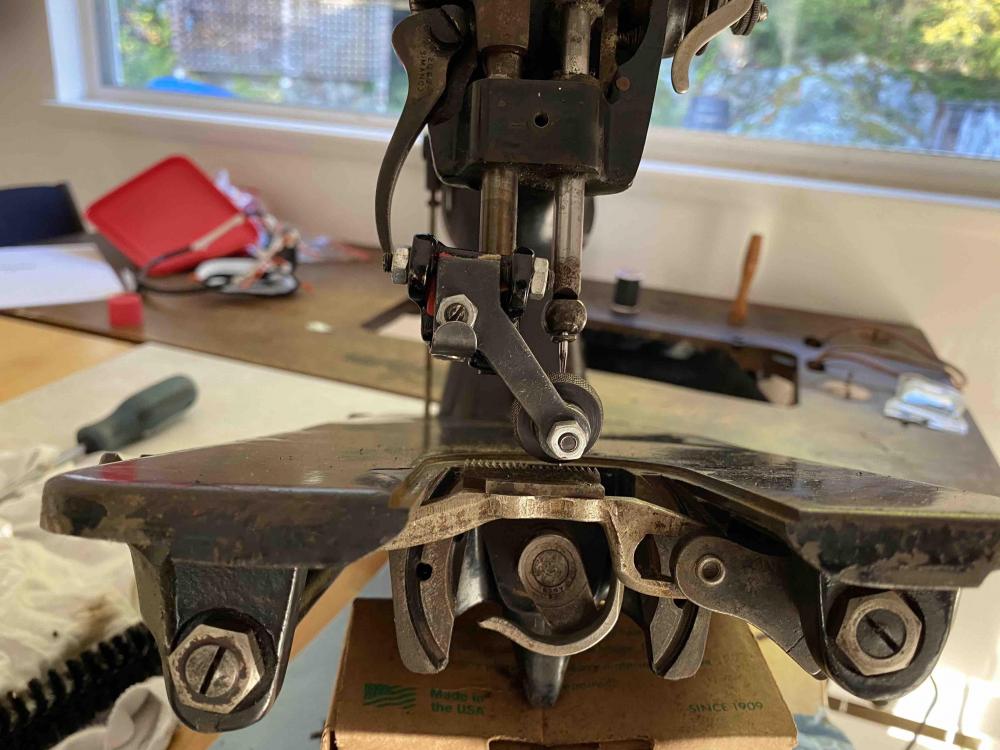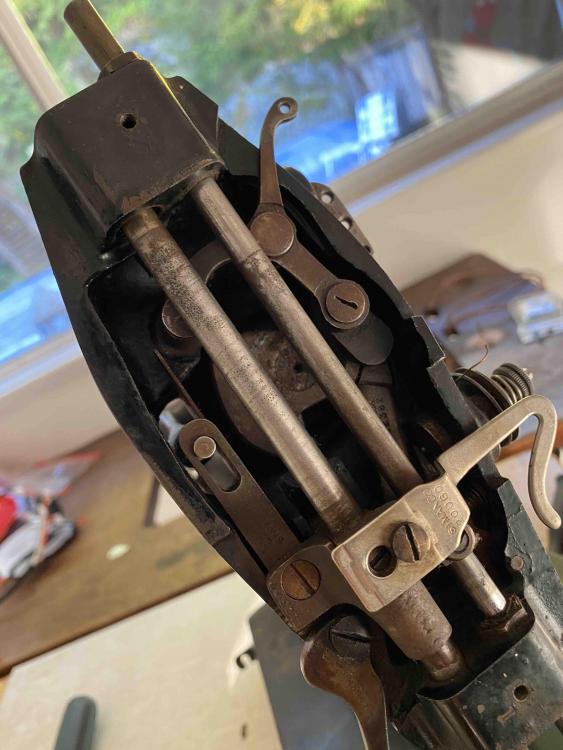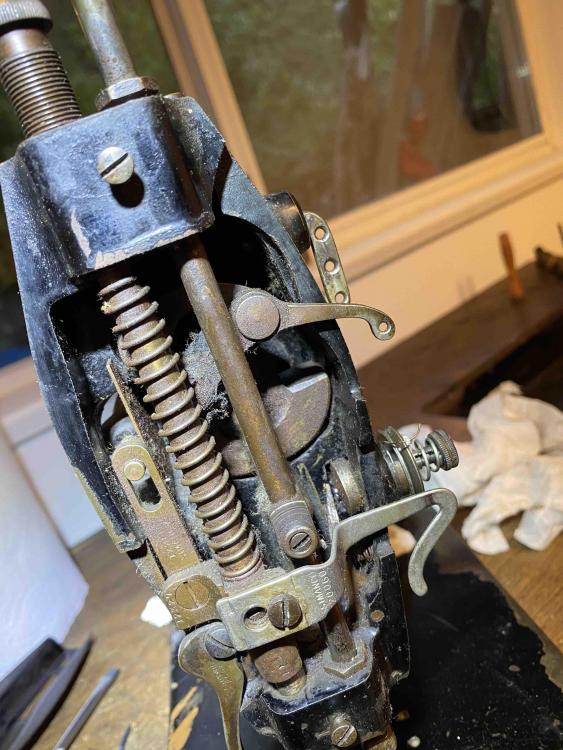
Tride
Members-
Posts
9 -
Joined
-
Last visited
Profile Information
-
Location
Canada
-
Interests
Learning
LW Info
-
Leatherwork Specialty
First timer
-
Interested in learning about
Everything
-
How did you find leatherworker.net?
Internet searches on sewing machine
Tride's Achievements

New Member (1/4)
-
New to this 31K20 and to everything else too
Tride replied to Tride's topic in Leather Sewing Machines
Yes! Good thinking, and happy to report it worked! (I used a plastic block). Thanks! Now that I freed up the needle bar I removed it and cleaned it up with some wd-40 and a scotchbrite pad, it's looking like new again and slides freely through the adjuster piece. I then tried to set the needle height as best I could to try and accommodate the needles that I have, which are labeled : "DPx35LR 134x35LR SY7227 130/19" For a minute it looked like it might not work, as it seems like these needles are just a tiny bit too long. My initial attempt, setting the height with the needle tip sitting just under the hook, looked good but then when I tried turning it through a complete cycle the needle holder hit the body of the machine at the top of the stroke. So I moved to what seems to be the maximum distance that still allows a complete turn cycle, which set the eye of the needle a bit further under the hook than the recommended 3/32 distance, but, on trying it out with a slow speed hand turn.... was successful in hooking the thread! Guessing maybe this is the absolute maximum length needle that could work. Will look into all the other needle system options that everyone has been recommending, feel like getting a tiny bit more tolerance is probably a good call. -
New to this 31K20 and to everything else too
Tride replied to Tride's topic in Leather Sewing Machines
Update(s).... First, thanks again for all the input. Learning a lot. So after watching some youtube on adjusting timing, and looking at this machine, it looks like it was definitely adjusted for a shorter needle than these industrial ones that came in the drawer. So, thought I'd try adjusting needle height, didn't look to complicated...... But.... I'm stalled because after removing the screw in the needle bar clamp, the needle bar still won't move, just seems seized in there. Don't want to wrestle it too hard and wreck something, so I'm just giving it periodic seafoam squirts and hoping that helps loosen it up. Thought about blocking the top or bottom of the needle bar so it can't move and then applying pressure by trying to turn the hand wheel, but again that seems pretty aggressive so not sure it's best call. One other thing I've noticed while in there, is the tension release lever (part #43944) seems just a hair off, so when lifting the presser foot, the pointy part of that grazes the pin and slides off to the side, instead of pushing it in. I suppose I could try removing the lever and giving it the slightest of bends to try and line it up better, but again, feels a bit aggressive....I'll try attaching a video of that issue... IMG_4108.mov -
New to this 31K20 and to everything else too
Tride replied to Tride's topic in Leather Sewing Machines
Thanks so much for all the responses, very glad to be here and learning from y'all. -
New to this 31K20 and to everything else too
Tride replied to Tride's topic in Leather Sewing Machines
Right on, thanks for the advice. Knowing absolutely nothing about servo motors, what kind of things would I want to factor in when looking for the appropriate one? -
New to this 31K20 and to everything else too
Tride replied to Tride's topic in Leather Sewing Machines
Hi JJN, thanks a lot man, appreciate the insight! Yeah I'm already feeling bad about turning it on and trying to sew with it right out of the gate like that..... Breaking the needle was probably a real good thing, as it forced me to slow down.... Oh yeah, and regarding the needle thing, are domestic needles shorter than industrial? I found the tip that broke off, and when I put it together to compare, it looked like it was a shorter overall needle than the spares that were in the drawer, which, I would assume would explain things not lining up and catching if the shorter one were what it was adjusted for.... But then again, there may be another fragment of it somewhere that I didn't see. In case it helps, here's a photo of the two packs of spare needles that were in the table drawer, and the needle that broke.... Let me know if you think I should be able to get either of these spare models working... Thanks again! -
New to this 31K20 and to everything else too
Tride replied to Tride's topic in Leather Sewing Machines
-
New to this 31K20 and to everything else too
Tride replied to Tride's topic in Leather Sewing Machines
-
New to this 31K20 and to everything else too
Tride replied to Tride's topic in Leather Sewing Machines
-
Hi, just joined the forum because most of my google searches about the machine I just picked up led to here.... Background: I know nothing. Like seriously, nothing..... I've never sewn anything in my life, either by hand or machine. I actually went down this road because I lent out a hang gliding harness that was never returned, and hard to replace, so I thought, "maybe I could just figure out how to make one". Had literally no idea that you couldn't sew stuff like nylon webbing on any sewing machine. Luckily the first guy that I went to buy a used machine from told me that I needed to look for something a bit more industrial, so I did that, and found someone selling this singer 31K20. They said it could also be used for sewing leather, which I though sounded like a super cool thing to do as well. So, off I go…. got the thing home, plugged in the super sketchy looking old cloth wrapped power cord, rigged the belt to the wheel, did a 2 minute google search on “how to use a sewing machine" and tried to sew some webbing and padding together. there were a couple stitches, a lot of noise, a lot of me wrestling and tugging, and then the needle broke. Pretty classic new idiot move, I reckon. There were some other needles in the drawer, so i put one of those in, but had no success picking up the lower thread anymore. Finally realized I was being a huge idiot just jumping into it without trying to care for this thing a bit first. So I pulled it off the table and started taking the easy to access stuff apart and cleaning 96 years of gunk off. Haven’t gotten super deep into it yet but I’m amazed at how nicely these parts shine up. So, this is where I am at now, partially disassembled, cleaning what I can, and trying to be a bit smarter about how I proceed. Seems like you guys over here are super knowledgable, so I wanted to throw a few questions to y’all…. A- The needle that was in the machine (the one that I broke), had a flat side to the part that mounts in the needle holder, but these spare needles that were in the drawer are all round, with no flat side. Guessing that might have something to do with why they didn't work? I had no idea the world of needles was so complicated…. Found in the paperwork that they gave me with the machine that I’m supposed to use “16x87” needles, but those seem pretty rare, are there any more commonly available needle systems that would fit/work? B- The motor/clutch system makes a hell of a noise when I start it, but just for a second then seems to spin fairly normally, (still a bit noisy though). I’m not sure about diving into it myself, guessing my best bet is find someone who knows how to service a 96 year old electric motor and ask them to give it a check out, and maybe new wiring? C - Now that I’m in the “take apart and clean” phase, I’ve been using wd-40 and kerosene and scotchbrite pads and some small brushes. It all seems to be getting me somewhere, but thought maybe you guys have some better tricks/ideas. I’ll try and attach a bunch of photos, good to be here, and stoked for any advice people have for me.


